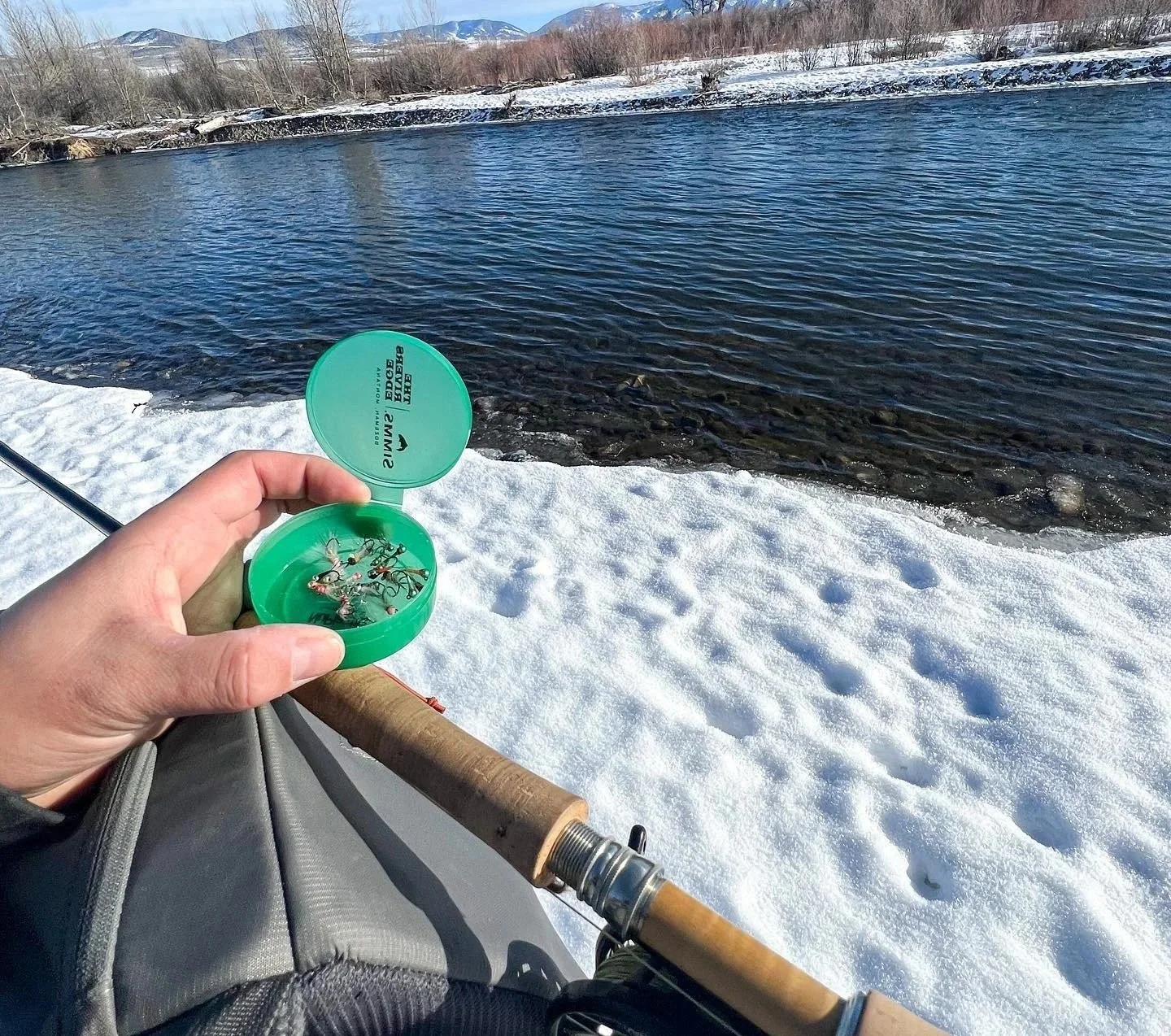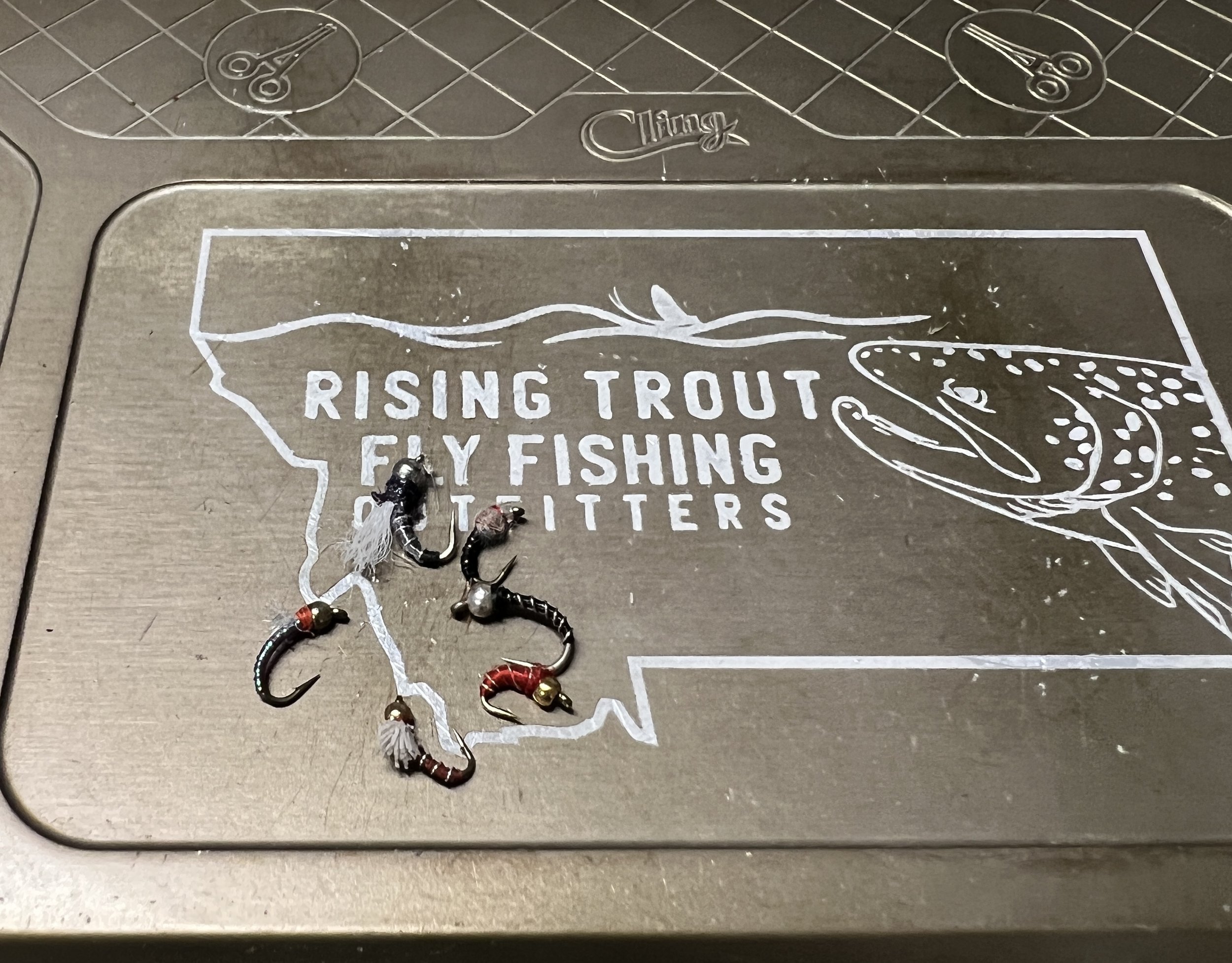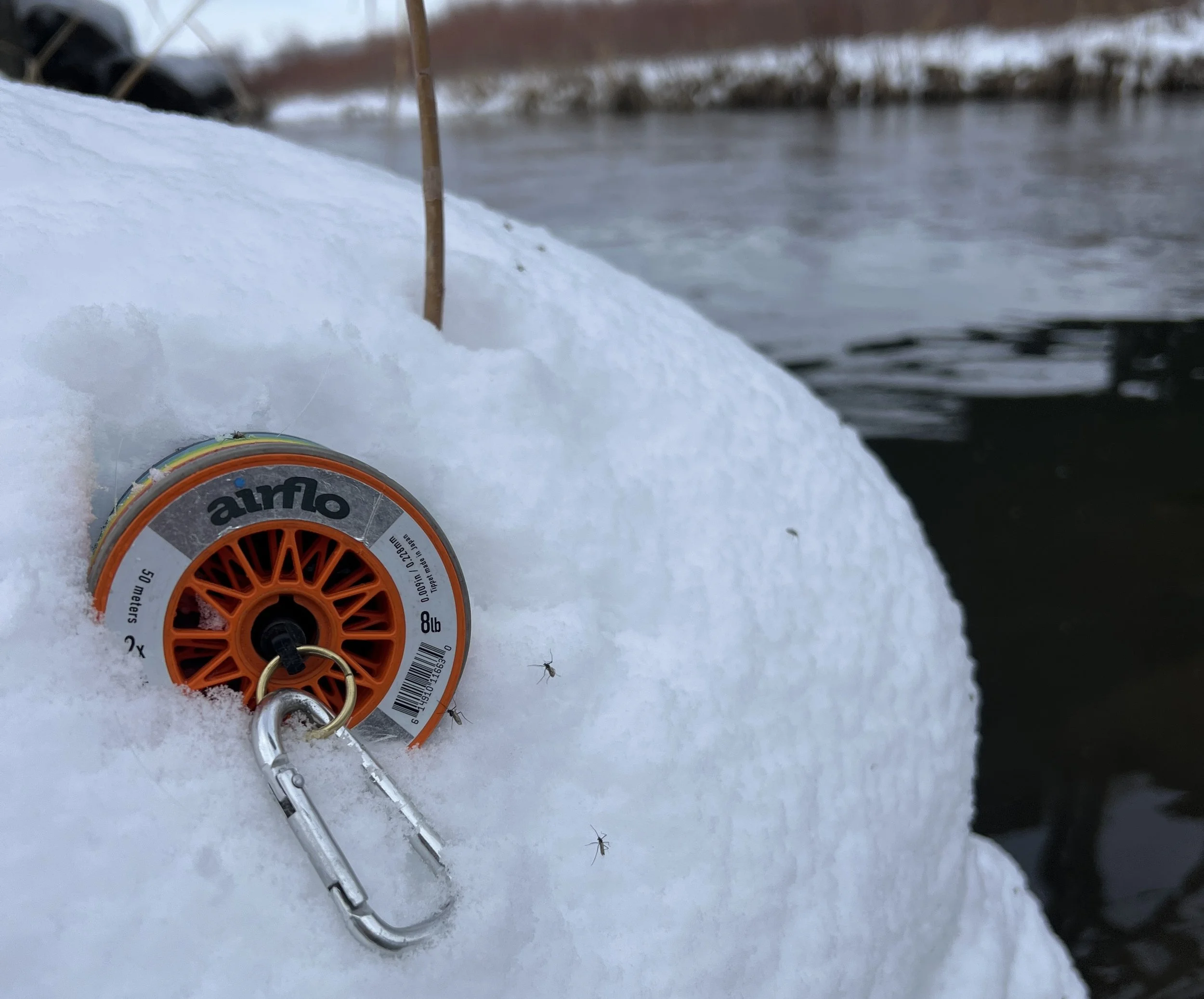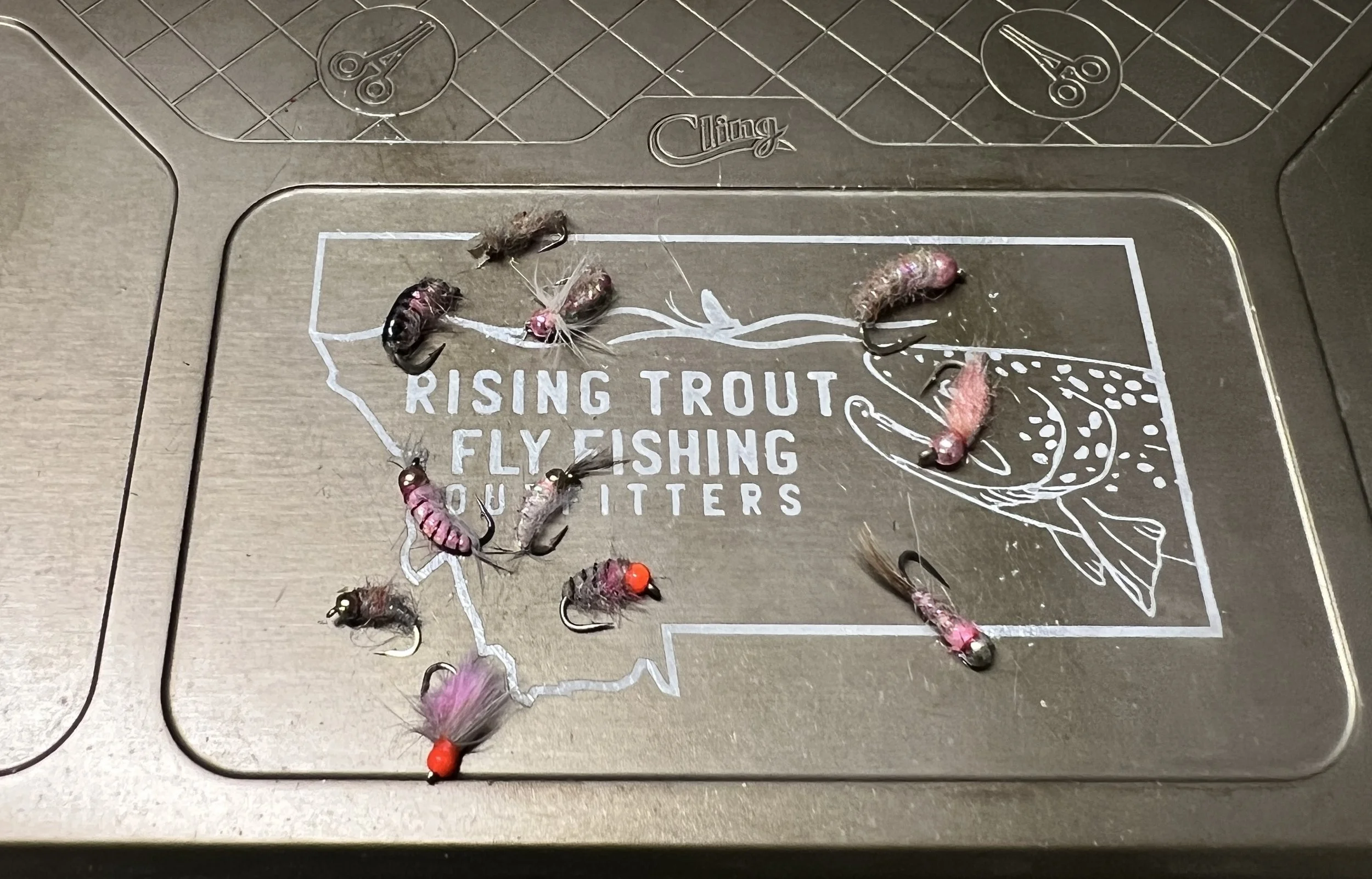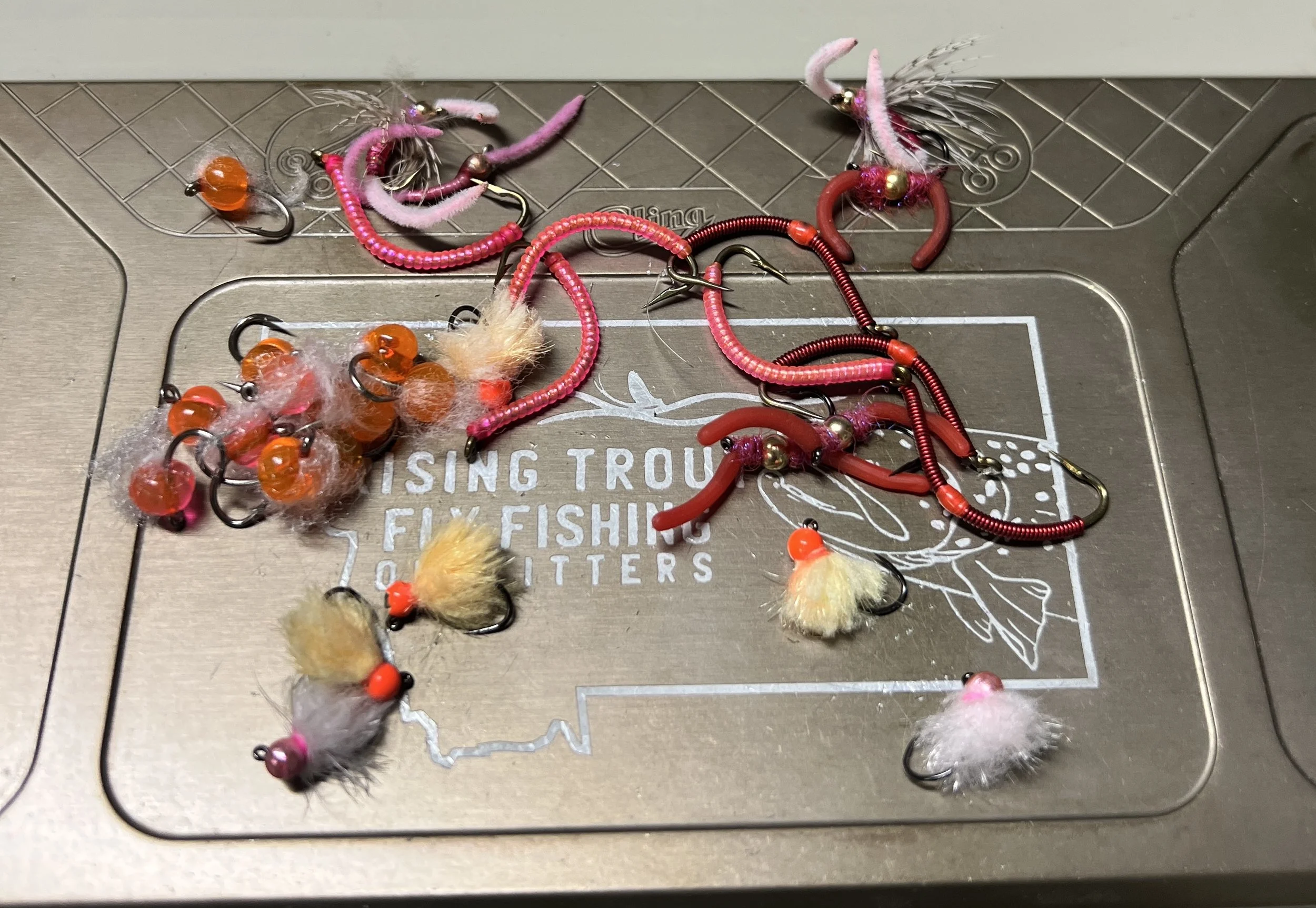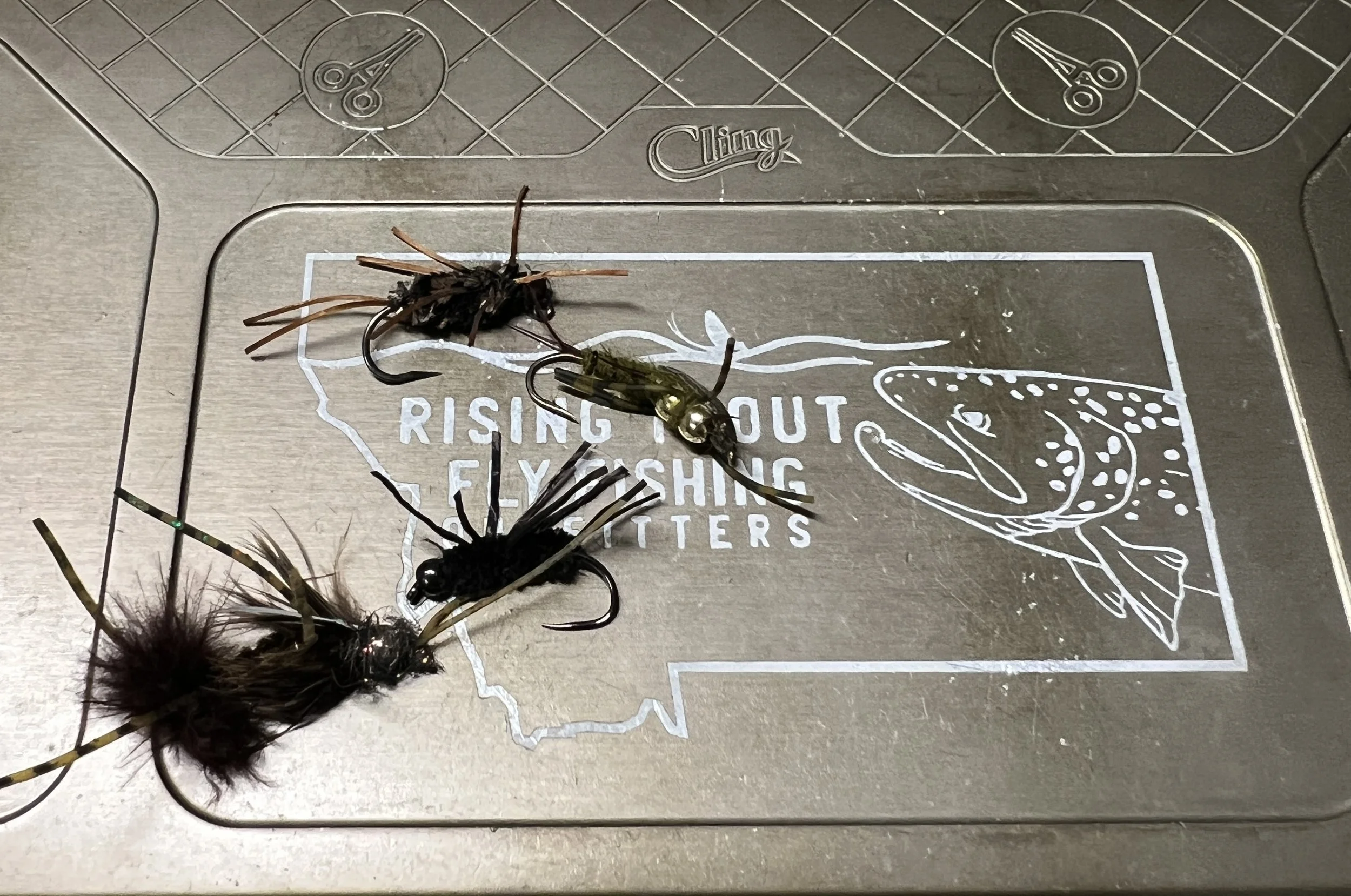Best Winter Flies for Montana: Essential Patterns
Must-Have Winter Flies for Montana: Essential Categories & Our Favorite Patterns
Winter fishing in Montana is all about understanding trout behavior in cold water. As temps drop, trout slow down, feeding windows shrink to the warmest part of the day, and fish slide into the softest water available—deep buckets, slow edges, and mid-river troughs where they can conserve energy. Because food sources become limited, winter fly selection shifts dramatically toward small, simple patterns that imitate midges, mayflies, and the occasional high-calorie option like eggs or sculpins.
If you read our full Winter Fly Fishing in Montana guide, you already know that winter success comes down to three things:
Knowing where fish hold
Fishing low and slow
Using flies that match the tiny, cold-water menu
The patterns below are the flies we rely on across the Upper Madison, Lower Madison, Gallatin, Yellowstone, Missouri, and our local spring creeks all winter long.
Perdigons
Perdigons are one of the most effective winter nymph categories because they sink quickly and stay down. Their slim bodies and heavy tungsten beads allow them to cut through cold, dense water and reach bottom-holding fish that aren’t willing to move far for food. While Perdigons don’t imitate a specific insect, they represent the general profile of small winter nymphs—especially midges and baetis. On the Madison, Gallatin, and Missouri, they often serve as the anchor fly in winter nymph rigs, ensuring your smaller trailing flies stay in the feeding lane. Fish these in all sizes from #12-18, Larger sizes as point flies for weight and smaller sizes as droppers for natural bug size imitations.
Favorite Winter Perdigons: Spanish Bullet, Jig Napoleon, Perdibomb, Jig Rainbow Warrior, Olive Perdigon, Black or Purple Purdigon
Midge Nymphs
Midge nymphs are the cornerstone of winter fishing in Montana. Midges are active year-round and become the primary food source from November through February. Trout rely on these tiny larva and pupa because they’re abundant and reliable even in bitter cold. Patterns like thread-bodied midges, Zebra Midges, and Snowcones imitate both larval and emergent stages, and they’re most effective in soft buckets, slow edges, and spring creek flats where trout can feed without spending unnecessary energy. These flies are typicaly fished in the #16-20 size.
Favorite Winter Midge Nymphs: Zebra Midge (Black or Red), Disco Midge, Miracle Midge, Holo Midge, Brassie, Flash Midge
Midge Dries
Even in winter, dry fly fishing is very much possible, and midges provide the opportunity. Calm, partly cloudy days sometimes produce surface activity, especially on the Madison, Missouri, and local spring creeks. Trout rarely rise aggressively in winter—they sip gently, making subtle rings in the surface film. Low-floating patterns like Griffith’s Gnats, Sprout Midges, and CDC adults excel during these windows. Drag-free drifts, longer leaders, and fine tippet help fool selective winter risers. These flies are typically fished in sizes #18-20
Favorite Winter Midge Dries: Griffiths Gnat, Sprout Midge, CDC Midge, Midge Cluster, Hi-Viz Gnat
BWO Nymphs
Blue Winged Olives (baetis) remain active through early winter and reappear during warm spells later in the season. Their slim, dark profiles make them easy targets for trout in cold water, and they often represent the second most important insect after midges. Fish them in softer seams, transition water, and slow tailouts where baetis naturally drift. These flies are typically fished in sizes #16-18
Favorite Winter BWO Nymphs: May it be Baetis, Splitback BWO, Barr’s Emerger, CDC Emerger, Radiation Baetis, Flashback Pheasant Tail, RS2, Galloup’s Jigged BWO, Day Saver May BWO
BWO Dries
Though less common than midge hatches, BWOs can still emerge during mild winter days, especially before storms or temperature drops and on spring creeks. Winter baetis dries work best in slicks, slow glides, and soft foam lines. Patterns like CDC emergers, sprout-style dries, and comparaduns ride low and imitate the delicate footprint of a winter olive. These hatches are brief but incredibly productive when they line up with rising fish. Typically fished in size #18-20
Favorite Winter BWO Dries: Sprout Baetis, CDC Comparadun, Film Critic, Extended Body BWO, Parachute Adams, Purple Haze, Sparkle Dun BWO, Almost there Baetis, ICU Beatis
Czech Nymphs (Sow Bugs & Scuds)
Czech-style nymphs represent sow bugs and scuds—major winter food sources on tailwaters like the Missouri and Madison. These crustaceans flourish in stable, vegetation-rich systems, making sow bugs a year-round target and an especially important winter pattern. Czech-style sows such as Ray Charles, Amex, and Tailwater Sowbugs drift naturally through soft troughs, deep bends, and slow shelves where winter trout settle in. Their high-protein punch makes them a perfect cold-weather meal. Fished typically in sizes #14-18
Favorite Winter Czech Nymphs: Ray Charles (gray, tan, pink), Amex, Soft Hackle Sow, Tailwater Sowbug, Yum Yum, Cotton Candy, CDC Soft Hackle, Mini Mo, Firebead Soft Hackle Sow
Eggs & Worms
Read More in Our “Trash Fly” Blog
Eggs and worms provide large, high-calorie meals that trout respond to very well in winter. Eggs imitate drifting trout eggs left over from the brown trout spawn or precursors to the rainbow trout spawn in late winter, while worms imitate annelids washed loose from saturated winter banks. These patterns excel on tailwaters and at the mouths of tributaries. Oregon Cheese eggs, Nuke Eggs, and San Juan Worms offer excellent visibility and nutritional value in cold water.
Favorite Winter Worm and Egg Patterns: Mop Fly, Slush Egg, Nuke Egg, Micro Egg Cluster, San Juan Worm, Squirmy Worm, Wire Worm, Pool Noodle.
Small Stonefly Nymphs
Small winter stones remain active all season long. Even in freezing conditions, juvenile stones crawl along the rocks and frequently enter the drift. Smaller versions of Pat’s Rubberlegs, Micro Stones, and slim dark stonefly nymphs represent these insects well. These patterns are productive along deeper seams, mid-river buckets, and structure-rich edges, especially on the Madison and Gallatin. Typically fished in Size #10-14
Favorite Winter Small Stonefly Patterns: 20 Incher, Double Bead Stone, Mini Jigged Rubberlegs, Straggle Stone, Prince Nymph, Atomic Stone, Flash Fav
Small Sculpin & Baitfish Streamers
While trout don’t chase aggressively in cold water, they will eat a slow, easy, high-calorie baitfish imitation. Small sculpins and minnows represent large meals that justify the effort. Sculpzillas, Thin Mints, Mini Dungeons, and Sparkle Minnows fished with slow strips, slight twitches, and long pauses produce well in deep runs, undercut banks, and slow winter shelves. A cautious, subtle retrieve is key—winter trout want the advantage. Typically fished size #8-12
Favorite Winter Streamers: Sculpzilla, Mini Dolly Llama, Chicago Overcoat, Sparkle Minnow, Montana Intruder, Micro Dungeon, Copper Zonker, Kreelex
Final Thoughts
Winter fly fishing in Montana might look a little different—snow along the banks, steam rising off the river, and trout tucked tight into the soft stuff—but that’s exactly what makes this season so special. It’s quiet, calm, and refreshingly simple. With the right flies, a thermos of something warm, and a slow, steady approach, winter trout fishing becomes less about numbers and more about enjoying the moment. Whether you’re out there shaking the ice out of your guides or watching a single subtle rise in a back eddy, winter has a way of slowing you down and reminding you why we love this sport in the first place. Stay warm, stay patient, and enjoy every drift—Montana’s winter trout are absolutely worth it.
Winter Guided Trips
Winter in Montana offers beautiful solitude, soft winter light, and surprisingly consistent trout fishing. If you want to experience the season at its best, Rising Trout Fly Fishing Outfitters is offering full-day guided winter trips for $500.
Book your winter trip today and fish the quiet season with confidence.

